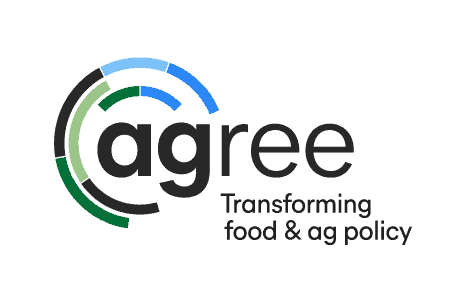Ag Lending as a Lever for Conservation Adoption and Resilience
2 September 2020What if our ag lending system could incorporate the risk reduction benefits of conservation – improved soil health, more efficient water management, and diverse crop rotations – into more favorable lending terms and conditions?
What if we had the data to make those arguments empirically and unequivocally?
How might that transform decisions – both on the farm and within ag finance institutions?
A new EDF report, Financing Resilient Agriculture: How agricultural lenders can reduce climate risk and help farmers build resilience, begins to answer some of these questions. AGree’s Economic and Environmental Risk Coalition supported and contributed to the paper along with The Nature Conservancy, KCoe Isom, and Scott Marlow.
In addition to offering a primer on ag lending and the 5cs of credit – capacity, capital, collateral, character, and conditions – plus raising critical equity considerations in agricultural lending, the report offers lending institutions a path forward to examine ways to build market capacity for conservation investment. It contains three main recommendations:
- Assess climate risk at the lending institution level. This will require buy-in from senior leadership, and it could utilize or modify existing climate risk assessment tools developed for the finance sector. Smaller lenders may be able to collaborate with each other or get external support to develop this capacity.
- Understand the role of resilient agriculture in managing climate risk. Lenders should familiarize themselves with locally-relevant climate risks and resilience strategies, collaborate with other organizations in assessing the farm budget impacts of conservation practices, and identify data blind spots — including for small farmers and farmers of color.
- Design lending products to support farmers in building climate resilience and integrate the financial value of resilient agriculture into credit ratings. Products could include transition loans that align with return projections of resilient farming practices. Such products can also be utilized to collect data that can be incorporated into credit ratings. This will allow the value of resilient agriculture to be accurately reflected in credit structures and pricing. As new lending programs or products are developed, they should avoid doubling down on existing inequities in the agriculture system and seek to mitigate disparities in access to opportunities to build resilience for all farmers.
The report’s “theory of victory” to transform ag lending and crop insurance products to incorporate the financial value and risk reduction of conservation practices is a great complement to the AGree Coalition’s work to drive conservation adoption through the integration of agriculture data, risk management, and innovative financial tools.
I am excited by these recommendations and the opportunities that ag finance represents for incentivizing the adoption of conservation practices to mitigate risk. I hope you are equally inspired and find this paper a helpful resource! Please reach out if you have ideas for how we can use finance as a lever for conservation adoption and climate resilience.

